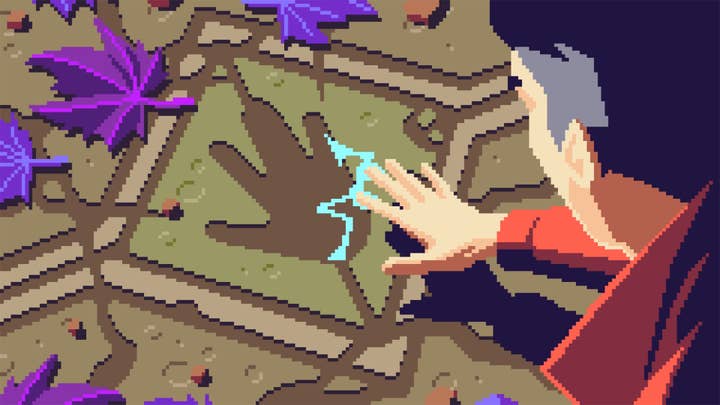Kickstarter veterans on how to run a successful crowdfunding campaign
YoYo Games' Ross Manthorp explains seven key crowdfunding lessons from GameMaker Studio 2 developers
While game development may be more accessible than ever today -- thanks in part to engines like GameMaker Studio 2, which is used by a wide variety of indie developers across the world -- it's easy for scope to extend to a place where aspiring developers need a little extra cash to see their passion project come to fruition. With so many disciplines involved, few games are made entirely by a single developer, and most lone developers will hire a separate contributor to compose the music or tackle animations. This can be costly, and even with offers to work for free, it can still cost a lot to bring a game to market -- what with paying for submissions, marketing fees, travel costs, etc.
A popular trend for indie developers has been to seek additional funding on crowdfunding platforms such as Kickstarter. This is easier said than done, though, as it is very competitive and a majority of video games don't reach their funding goals. According to ICO Partners, there were 1,149 unsuccessful video game Kickstarter campaigns in 2018, and only 352 were successful. Of those, 292 asked for $50,000 or less.
That's a tough market, so we at YoYo Games spoke to developers from the GameMaker Studio 2 community who had successful Kickstarter campaigns. They told us what they believed led to their success.
Always be prepared
"If you think you're just about ready, spend another month if possible to prepare more content for your updates"
Simon Filip
One key aspect they all agreed on was preparation. Lots of preparation. Oscar Brittain, whose GameMaker Studio 2-based hoverbike racing RPG Desert Child raised $14,427 (AUD) from a $12,000 goal, said: "I think having a snappy trailer with close to final art assets was important. Also, I created a lot of art just for the Kickstarter -- like headings, animated icons for each reward tier. I feel that showing your commitment to presentation makes people value your project more highly."
Simon Filip, whose action-platformer Flynn: Son of Crimson raised $63,218 of its $40,000 goal and is set to launch on PC next year, attributed his success to both preparation and community engagement.
"Be as prepared as possible," he said. "If you think you're just about ready, spend another month if possible to prepare more content for your updates. Remember that the trailer is likely the first thing that potential backers are going to see, so you'll need to grab their attention immediately. Don't have a slow 30-second intro to your trailer; jump straight into your gameplay and show off your best features from the start. Saving big moments for the end is fine, but not if you sacrifice excitement throughout the entire video.
"We had created gifs to send out on Twitter to a following of 10,000 people -- which we built up over two years -- for every day of the campaign, which helped immensely in getting it out there. We tried to show as much gameplay as possible to prove that what we were doing wasn't just a concept, holding nothing back."
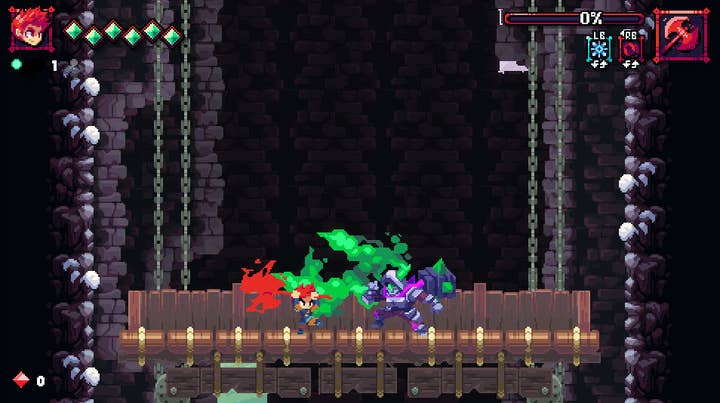
David Strachan, whose online co-op game Undercrewed made £5,100 of its £5,000 goal in May 2018 and is coming soon to PC, said it was community engagement that gave his campaign the attention it needed.
"I spent a lot of time engaging with communities that I thought were likely to enjoy the game: sci-fi forums, local co-op Subreddits, multiplayer Facebook groups, co-op websites, other space games," he said. "There isn't a golden bullet to being funded. In fact, you get to see a breakdown of where backers come from and mine showed lots of locations, each sending a small number of people: 5% from Reddit, 5% from forums, 5% from Twitter, 5% from one article, 5% from another article."
Daniel Hindes, whose stealth platformer Wildfire made $20,166 (AUD) from a $10,000 goal in May 2015 and is finally nearing its PC launch, similarly stressed the importance of a flashy presentation. "Pay a professional artist to make great key artwork for you," he advised. "This is the first thing people will see when they find your campaign, and you want that art to capture them so that they stay to find out more."
Keep them in the loop
"It's like having a newborn baby; you have to tend to it constantly, even throughout the night"
Oscar Brittain
It isn't just preparation; a solid Kickstarter campaign needs to be intensely micro-managed, with a steady stream of updates and social media posts for the duration of the campaign.
"Update every second day," Brittain said. "Have a reserve of art assets, music tracks, videos -- anything you can put out there to make people excited. Running a Kickstarter campaign was like a full-time job. You need to be able to commit that whole month. If you have a nine-to-five job try and take some time off, at least for the start and end of the campaign. I think a lot of people underestimate how hard and stressful it can be. It's like having a newborn baby; you have to tend to it constantly, even throughout the night."
Strachan agreed: "I think a lot of people underestimate the amount of work it takes. The campaign for Undercrewed was about as small as you can get and I estimate I spent 200 hours before the campaign started researching, writing descriptions, writing scripts, filming, getting contacts. And once the campaign was live it was a full-time job -- all day, every day."
Filip agreed that when it comes to Kickstarter, more is better. "We had 14 updates from our campaign's start to finish, but you can never have enough," he said. "Don't go more than two days without an update with fresh content and insight on your team and future plans. It can only help continue to get it out in front of new faces."
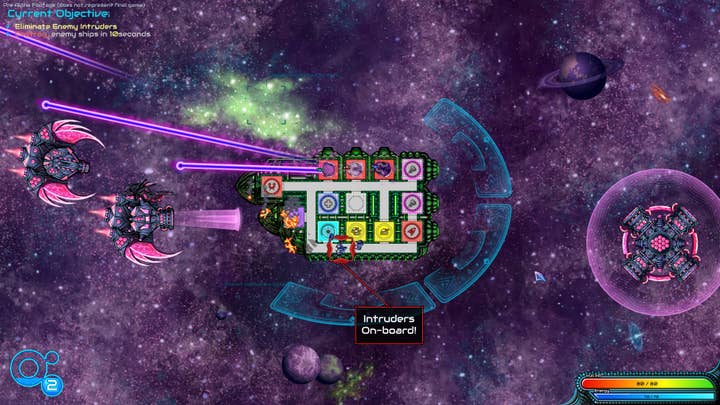
We're all in this together
Another pro tip is to engage with the Kickstarter community. Other developers are in the same boat as you, and everyone needs a little pick-me-up while under stress. This camaraderie paid off in spades for many of the people we spoke to.
"The best promotion I got was through trading shout-outs with other kickstarter campaigns," Brittain noted. "That's where you write an update and at the end do a small shout-out to another campaign, and they do the same for you."
Strachan found speaking to other devs running Kickstarter campaigns to be a tremendous source of emotional support. "We all need to talk to people when they have a campaign going bad," he said. "It can feel a bit uncomfortable to ask someone about their campaign when we can all see the figures show they are behind target. I had some moments where I got quite heavily behind schedule. One day I had more people cancel their pledge than new people pledging.
"Don't go more than two days without an update with fresh content and insight on your team and future plans"
Simon Filip
"I definitely feel there was a direct correlation. When it looked like it would be successful people would send me messages to say how exciting it was, and when the campaign wasn't great I had to contact people to run ideas past them. If you drop someone a message when their campaign is unhealthy, they aren't going to be annoyed at you. And they're around to bounce ideas off of."
Johan Vinet, whose side-scrolling adventure Lunark raised $81,655 (CAD) this past February and is shooting for a 2020 launch on PC and Mac, found that other developers on Kickstarter were a huge boon in launching what turned out to be a very successful campaign.
"Asking for help and being humble was good as it helped me in preparing my campaign, as well as building a network in the community. This ended up being a helpful resource when it came to spreading the news, or providing me some (very appreciated) moral support at the lowest points of the campaign.
"People are awesome. I know how cheesy it sounds, but I honestly met a lot of very nice people willing to help me and it was really heartening. I had to face all kinds of criticism and needed to focus on the positivity. Fortunately, there was a lot of positivity."
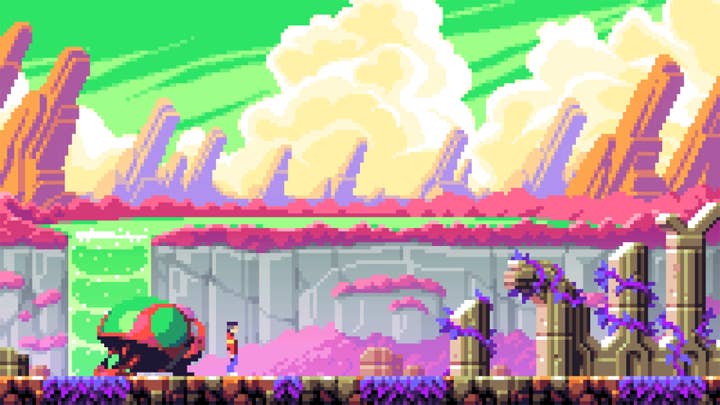
The Dos and Don'ts of demos
When it came to offering a playable demo, those we asked had different approaches. Brittain had a very loose working demo for Desert Child. Filip, on the other hand, had a 15-minute demo of Flynn that he sent to the press prior to the campaign, and then released publicly midway through to sustain interest.
Hindes credited Wildfire's crowdfunding success chiefly through its demo, which was available at launch. "We had a playable demo available as the first item on the campaign page," he said. "This made the project seem more viable and tangible than those that only launch with concept art or very high funding targets. Numerous former AAA developers have made this mistake and failed despite their reputations, so it's not just a consideration for indie developers."
"I had to face all kinds of criticism and needed to focus on the positivity. Fortunately, there was a lot of positivity"
Johan Vinet
Vinet, however, did not release a demo: "I had a demo and asked some friends if they thought it would help the campaign. Considering the feedback, I decided not to make it available because it was not representative enough of the game and could have hurt the campaign more than anything."
Strachan also didn't release a demo for Undercrewed, though he wishes he had. "I didn't have a demo and I massively regret this. Lots of the press and streamers are geared up for getting press copies and posting articles and reviews to coincide with your campaign."
Rewarding early adopters
Regarding backer rewards, most found that keeping things digital is the best approach, though not everyone was in complete agreement.
"I think physical rewards are a great way to build a fanbase," said Brittain. "As long as you are able to up-sell someone by two tiers, they're probably worth including."
Brittain had one important bit of caution to go with this: "Don't offer physical rewards that need large batches made. Even if you get a lot of backers, you might find that the item you need to get made can only be ordered in batches of say 50, leaving you with a tonne of surplus."
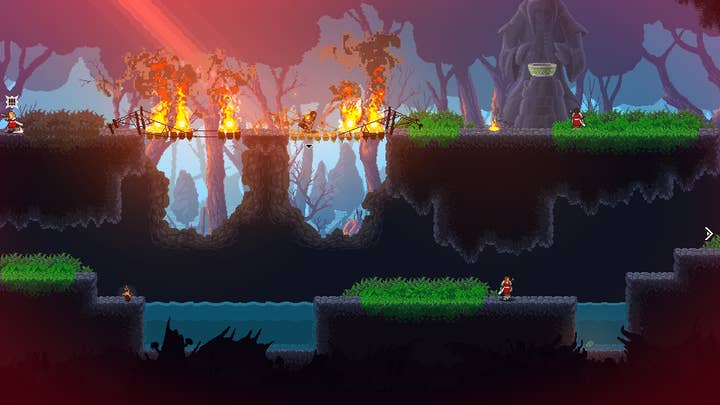
His favourite type of reward is personalised and digital: "Better than physical rewards, though, were the tiers where I collaborated on a game with the backer. This was a $1,000 tier, and three people backed it. I would really recommend doing something like this."
Filip has a somewhat mixed response to his experience shipping physical rewards for Flynn: "We offered shirts and posters. With all the work and costs it took in getting them made plus shipping, they weren't necessarily worth it financially. Though if we were to do another campaign someday, I'd do it all again just to see our game's merch going all around the world."
Strachan and Vinet didn't opt for physical rewards at all, with the one exception that Vinet would send a postcard to hundreds of backers.

"If you're alone like me (or a really small team), or asking for less than $100,000, I'd be really careful and would avoid it as much as possible," he said. "If you're transparent about your decision not to go with physical rewards, people will understand, and your honesty will pay out and increase your trust factor. Backers are willing to help anyway, but they do need an excuse to give you their money. It's up to you to be creative and find other incentives."
It's not over until it's over
Another thing to keep in mind about Kickstarter campaigns is that they slow down significantly in the middle, really only booming during the first and last few days of their campaign. This can lead to prolonged anxiety. While there's no guarantee it's going to work out, the developers we spoke to were adamant that it's not over until it's over.
"Don't cancel your campaign because you're at 50% with only five days to go. People wait until the last 48 hours to get a notification and back projects." Brittain said, after his campaign made the bulk of its money in the last two days.
Strachan added: "During my campaign I had periods where I was seriously worried it wouldn't get funded. However, near the end I had some streamers and articles get released just in time to swoop in and save the day."
If at first you don't succeed...
And even if your project doesn't meet its goal, it's okay to fail. It can be discouraging to spend a lot of time and effort on a crowdfunding campaign that doesn't meet its goal, but there are lessons to be learned from this too. Filip admitted that an early Kickstarter campaign he launched for another project didn't meet its target, only for the Flynn campaign to make 158% of its goal.
"With our failed campaign in the past, we were so excited with sharing the concept that we didn't create enough gameplay content -- too much time was spent on concept environment art," he said. "The best thing you can do, again, is really just focus on showing that your game is simply a game, and not a load of concept art and hopeful promises for what it could become."
Ultimately, it comes down to a mix of preparation, community engagement, and realistic expectations when going into a Kickstarter campaign. There are no hard and fast rules about what types of rewards to offer or whether you need a demo, but everyone can agree that the more you can show the better. People are naturally skeptical of Kickstarter campaigns, so it's important to prove to your community that what you're proposing is more than just a proof of concept. It's vital that you have a lot to show, and building community prior to launching a campaign is necessary.
But you're not in this alone, and there's plenty that can be learned from even a failed campaign. The important thing is to go out there and try. There's no rule that says you can't relaunch a campaign later, using what you learned from before. And who knows -- maybe your next attempt will be a runaway success.
Ross Manthorp is community manager at YoYo Games, the creator of GameMaker Studio 2.
